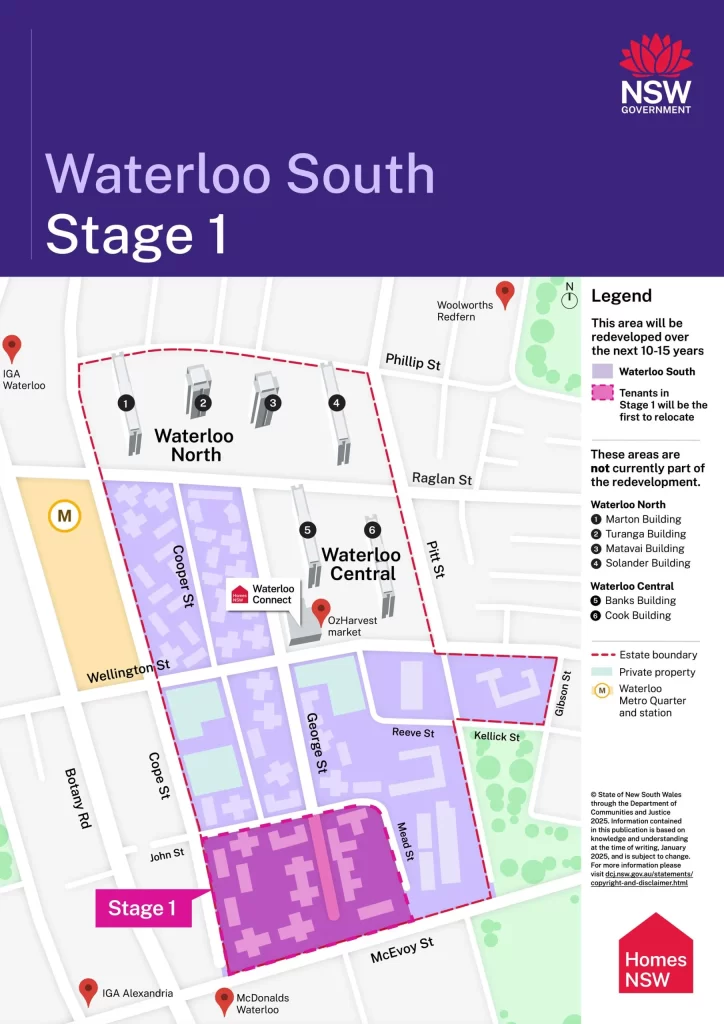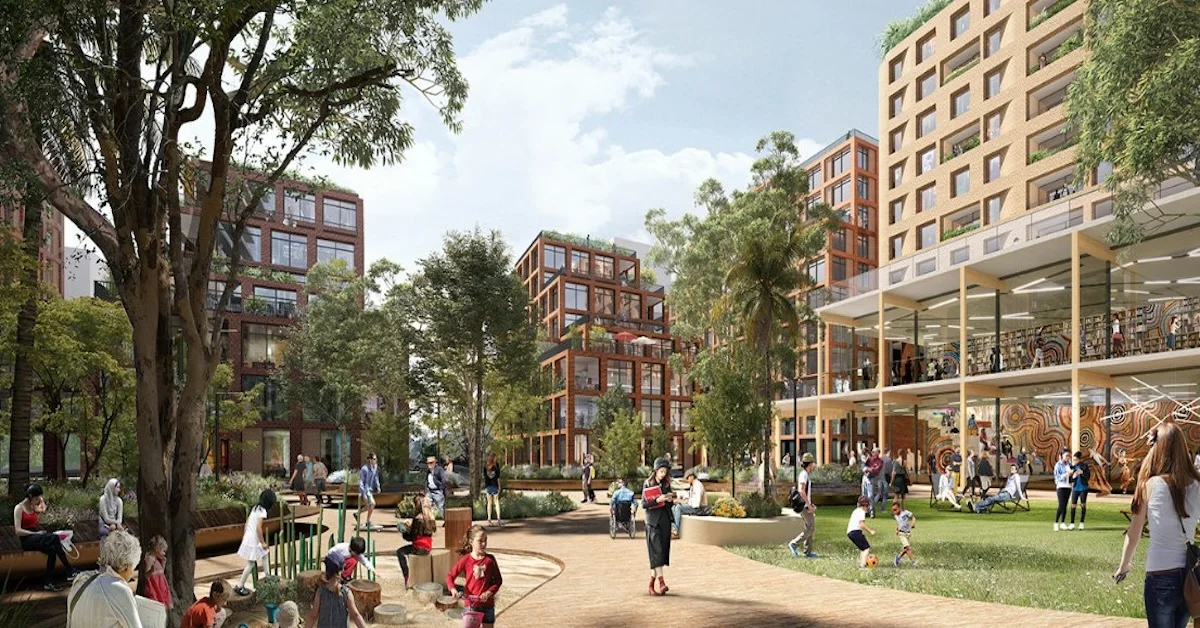More than 100 housing residents in Waterloo have been given eviction notices as part of a major redevelopment project that will reshape the area. The first group of tenants has been given six months to relocate, marking the beginning of a long-debated plan to replace public housing with a mix of market, affordable, and social housing. Many residents fear they may never return to the neighbourhood they have called home for years.
A Community in Transition
The Waterloo Estate, one of the largest in Australia, has been earmarked for redevelopment for over a decade. The project, valued at $4 billion, will see the construction of 3,000 new homes, with only 30 per cent reserved for social housing. Half of the development will be private housing, while the remaining 20 per cent will be offered at lower-than-market rent.
The first stage of the project affects 150 households in an area bordered by John, Cope, McEvoy, and Mead streets. Homes NSW hand-delivered these residents’ official eviction notices on 27 February.
The remaining tenants of Waterloo South will be relocated in stages over the next two years, while those living in the high-rise buildings have been told they will not have to move for at least a decade.
The government has offered support in the form of relocation officers, who will assist tenants in finding alternative housing either within the local area or elsewhere in the state. Additionally, 70 new social housing units above the Waterloo Metro station are expected to be available within six months.

Residents Fear Losing Their Community
Despite assurances, residents remain deeply concerned about the future of their community. Many have lived in Waterloo for decades and fear they will be permanently displaced. Some say moving into another public housing unit only shifts the housing crisis elsewhere, as new residents will take up available spaces.
A survey conducted in 2023 showed 43 per cent of Waterloo Estate tenants were open to leaving the neighbourhood if given the chance, but 35 per cent strongly opposed relocating. The figures suggest mixed feelings, though concerns are particularly high among Aboriginal tenants, who make up 22 per cent of the affected residents and may have stronger cultural and community ties to the area.
Local advocacy groups have expressed concerns about the lack of additional social work and case management support for affected tenants. While Homes NSW has funded Redfern Legal Centre to provide independent tenant advocacy, critics argue that this does not address the broader displacement concerns or the emotional and logistical challenges of relocation.
Long-Term Impact and Housing Debate
The redevelopment has reignited debate over housing availability in NSW, where more than 63,000 households are currently on the waiting list. Critics argue that demolishing existing structures to build a mix of private, affordable, and social units does not adequately address the shortage. The construction process is expected to take a decade, leaving questions about where displaced residents will live.
Residents and housing advocates believe the project prioritises developers over community needs. They point out that many of the existing homes in Waterloo South are still structurally sound, making demolition seem unnecessary at a time when construction materials and labour shortages are already delaying housing projects.
NSW has defended the redevelopment, saying it will provide modern, high-quality homes while increasing the overall housing supply. Housing Minister Rose Jackson has stated that affected residents will have the opportunity to return to the new estate once construction is completed.
However, critics remain sceptical about whether displaced tenants will be able to afford to return or if they will be permanently priced out of the area.
Published 7-March-2025







